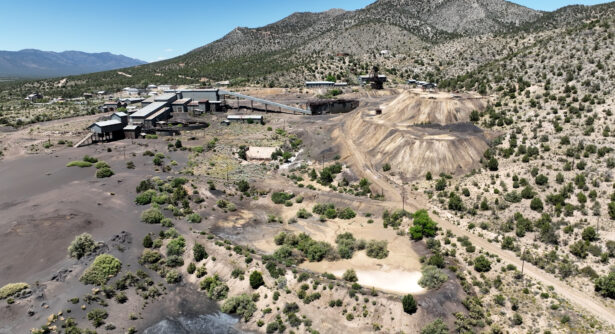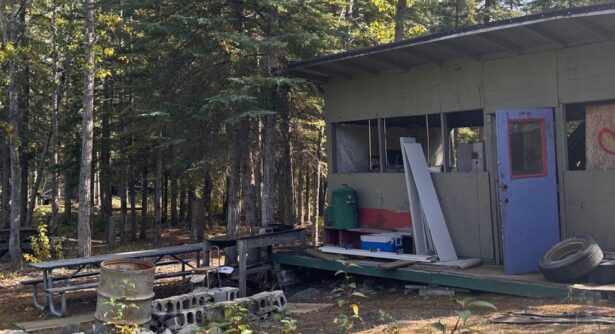
Sustainability and Resilience: What’s 17th Century Japan Got to Do with It?
After Hurricane Harvey, Paul Krugman asked, “Why can’t we get cities right?” Perhaps it’s because when we imagine a sustainable city, we are imagining something none of us has ever experienced, as Azby Brown notes in his 2009 book Just Enough: Lessons in Living Green from Traditional Japan. While imagining a new future can be exhilarating, it can also be overwhelming. As Puerto Rico rebuilds its electrical grid, Houston continues to recover from floods, Mexico City clears away rubble following the recent earthquake and the Florida Keys begin the long process of determining how and where to rebuild, we may do well to turn to Japan for inspiration, circa 1603.
No, that’s not a type-o. You read it right: 1603.
I am not a scholar of Japanese history, but I was intrigued by Brown’s discussion of Japan’s transition from the brink of ecological collapse to a thriving society that was also home to the world’s largest city of its time. What follows shares some of the high points of Just Enough while also inserting the book into the context of current conversations about resilience, recovery, and land use. Brown wrote his book to give readers “insight into what it is like to live in a sustainable society, [especially] in how larger concerns can guide daily decisions and how social and environmental contexts shape our courses of action.” With that in mind, this post is intended to start a conversation about resilience and land reuse from a reference point that is probably unfamiliar to most of us in the United States.
Back to Japan: the country entered the Edo Period (1603-1868, also known as the Tokugawa Period) as an ecological basket case. Demand for timber to build great temples and palaces for the capital – which tended to move from city to city with relative frequency, demanding more timber for ever greater structures – had led to deforestation on a massive scale during the 8th to 10th centuries. Timber was in short supply (never a good thing on an island nation), the resulting erosion was compromising water quality, agriculture couldn’t expand to feed the growing population, and Japan’s ecological outlook in general was grim.
Brown argues that what makes Japan unique today emerged during the Edo Period. Prior to 1457, Edo was a small farming and fishing village. Following its selection as a castle site, it eventually grew to a population of 1.3 million. (The modern name for Edo is Tokyo, and the Tokyo-Yokohama urban agglomeration is the largest mass of urban dwellers on the planet, estimated at 37 million). Edo was the seat of political power and home to the Tokugawa Shogunate, as well as a number of features we might recognize and appreciate today, including urban parks and water infrastructure that provided fresh water 24 hours per day to all classes – something no contemporary European city could match. Remember, however, Brown’s core premise: “Japanese society once faced the prospect of collapse due to environmental degradation, and the fact that it did not is what makes it such an instructive example.”
Japan’s turnaround was not accidental. It was the result of deliberate policies that recognized that ecological health is governed by a complex and interrelated set of variables. Brown calls these policies multiform solutions, which are characterized by “allowing each element to perform several functions, and each function to be supported by several elements.” During the Edo Period, for example, the government took a variety of steps to reform forestry, with the explicit goal of improving both Japan’s forests and water quality. It recognized the relationship between these two areas, and the reality that addressing one would always be insufficient.
I won’t go into the details of these policies, but an interesting example is that of satoyama, or forested areas near human settlements. Traditionally sources of fuel and food, satoyama were also important indicators of local environmental health. Brown points out that although satoyama were once carefully monitored by Shogunate edict, the practice fell gradually away so that by the 20th century, Japan was facing a renewed environmental crisis. Brown suggests that “the environmental damage witnessed during the twentieth century may have been noticed earlier and halted if people had not stopped paying close attention to what was happening in their satoyama areas.” Today, a government-supported Satoyama Initiative has been established, with the goal to restore biodiversity, protect watersheds, and (re)develop sustainable agriculture by the dawn of the 22nd century.
As part of its commitment to living lightly, Edo recycled everything. It had to, but the reasons why are worth noting. Aside from the economic opportunities recycling offered Edo’s many inhabitants (a major conversation in itself), it also ensured that the City’s 1.3 million inhabitants could live sustainably on limited land, since Edo was built on a marsh, and much of its area was reclaimed from the sea. Edo was a net consumer of rice from throughout the Japanese archipelago, where only 25% of land is arable. It could consume the resources it did because that consumption was carefully balanced against available supply, but it was always clear that Edo’s consumption could not expand endlessly. On top of all this, resources were tightly controlled by the Shogunate (see Brown’s discussion on forestry management for a particularly illustrative example). For all these reasons and more, recycling was not an option – it was the way.
For me, Brown’s detailed description of Edo’s recycling loops recalled a life-changing trip I made to Japan on a two-week fellowship for American graduate students of public policy. The program was sponsored by the Japanese government, and on our first day in Tokyo, I glimpsed some of the daily habits that I now understand probably had their roots in the Edo period. Coming from the U.S., I had never before seen a set of three waste bins labeled compost, recycling, and landfill. After our first lunch, we were carefully shown how to separate the remains of our lunches into the different bins. Our guide noted that we would see this kind of waste separation throughout our time in Japan, and that it was common and necessary because it facilitated recycling. I have no idea when the Japanese began the practice of separating municipal waste to this degree, but based on my reading of Just Enough, the practice in some form dates back to the Edo Period. It’s worth noting that I did not see a similar set-up in the U.S. until I moved to the Bay Area in 2015.
In short, little in Edo went to waste, and the city boasted a complex recycling network that would probably be the envy of anyone trying to engineer a circular economy today. Thanks to the intricacies of Japanese wood joinery, buildings were able to be disassembled, moved, and reassembled. Housing materials were recyclable, as though they were “borrowed from nature for a few years,” as Brown describes the plaster used to coat walls. Roof tiles, ceramics, fabric, paper and even human waste were all reused – sometimes more than once. Indeed, Edo hosted a burgeoning market for night soil, which was composted and used to fertilize fields. I once heard a public health specialist quip that half of public health is keeping waste away from people, and Edo’s recycling systems helped facilitate that separation, down to the design of toilets. All of this had great positive impacts for public health, especially compared to contemporary European cities of the time.
Brown points out that to William McDonough, a sustainability theorist and co-author of Cradle to Cradle: Remaking the Way We Make Things, “pollution is a symbol of design failure” (wasteful product packaging is just one example – think about that the next time you open a box or strip plastic wrap off of a package). Put another way, many of our modern sustainability problems begin with what Brown describes as “our inadequate notion of what it means to use something completely.” It’s worth thinking about how technology and our relative wealth today have impacted our expectations for consumer goods, compared to the average 17th century Edoite.
Granted, some of the Shogunate’s cultural modifications were immediately possible because the 17th century Japanese were not citizens, they were subjects. By modern standards, the Edo Period had its faults, including totalitarian rulers, rigid social stratification, and vast social and economic inequality. What Edo can teach us, however, is huge, and while the story of Japan’s post-war economic comeback is often told, the story of its ecological comeback is less well known, and it deserves our careful attention.
In Brown’s discussion of multiform solutions, I see a larger inquiry about land recycling and the impacts of land use policies on everything from water quality to flooding, forestry and agriculture. Land recycling is a multiform solution – it is a way to address the root cause issues that dramatically and tragically limit resilience in communities across the U.S., as we saw so clearly and painfully after Hurricanes Irma and Harvey. By thinking creatively about land reuse, we can reweave our infrastructure, improve environmental quality, protect human health, foster environmental justice and social equity, grow local economies by creating jobs and boosting local tax rolls, reduce our dependence on automobiles, support sustainable agriculture – the list goes on and on.
As we often say at CCLR, land recycling is difficult, but the road to a sustainable, prosperous future runs through it. Brown puts it more bluntly: “Sustainable society will come, because the alternative is no society at all.” We would all do well to bear this in mind as we rebuild, and as we prepare for the next big storm, earthquake, or disruption.





